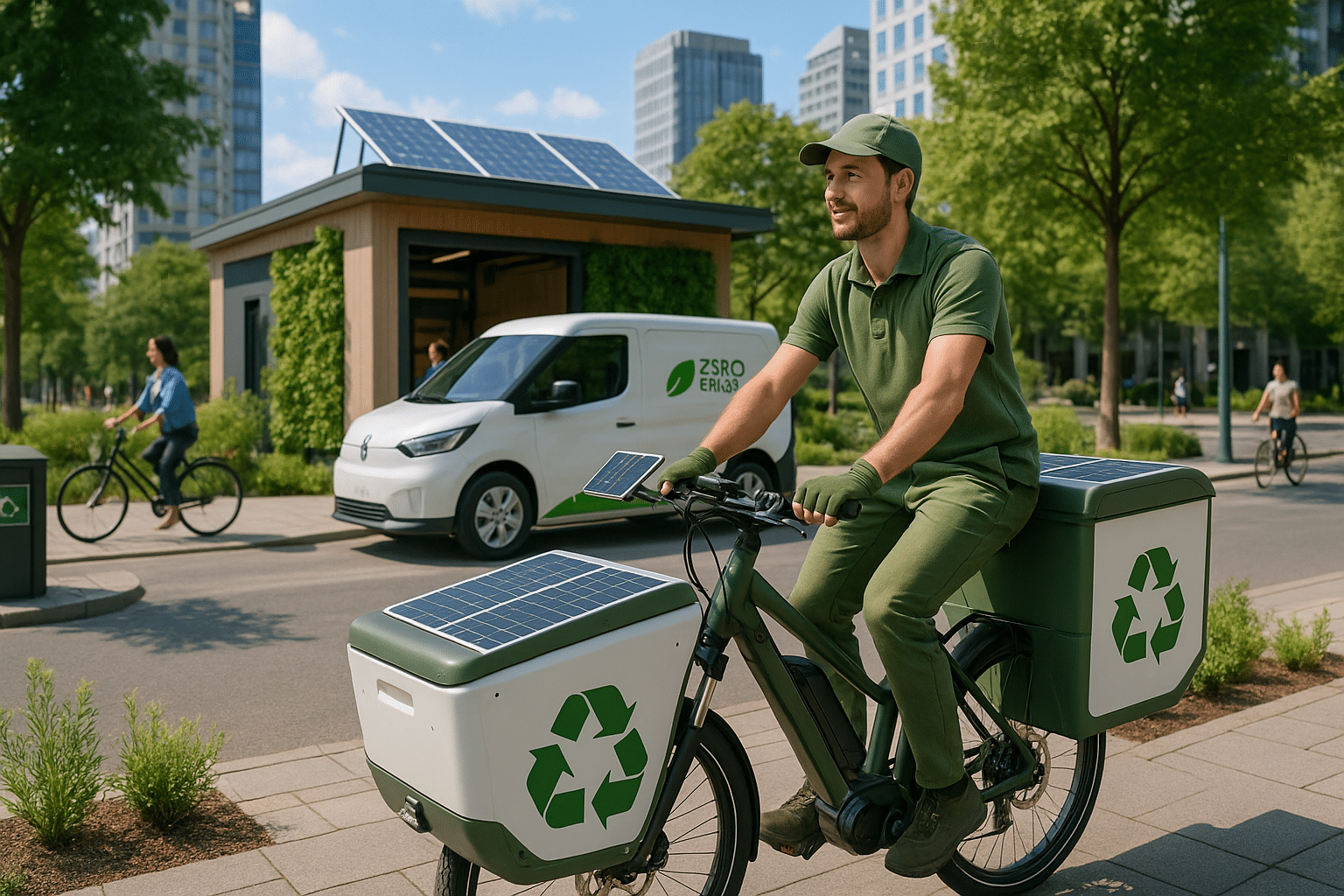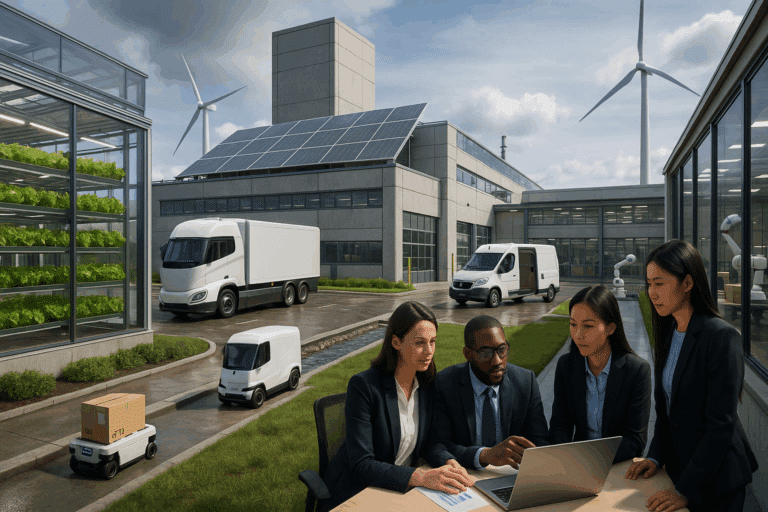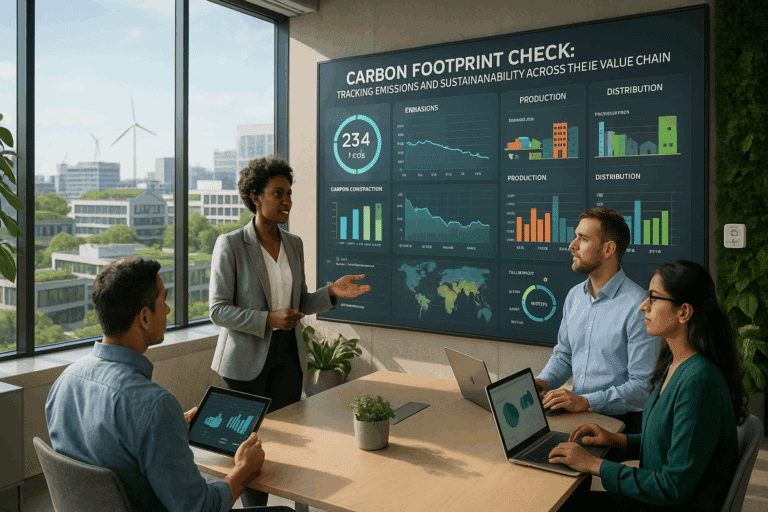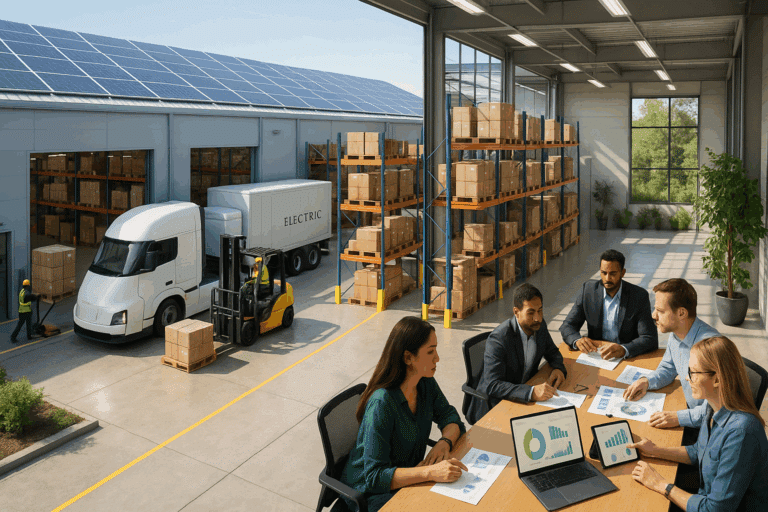But with this exponential growth also comes the challenge of mitigating the environmental impact of our increased reliance on last-mile delivery. In this digital age, where instant gratification is often the order of the day, we must not lose sight of the need to conserve our planet 🌍. We must balance our desire for speed and convenience with our responsibility to reduce carbon emissions and minimize our ecological footprint.
Eco-friendly delivery, therefore, emerges as a potential game-changer in the realm of last-mile logistics. This article delves into the innovative and sustainable practices that are revolutionizing the delivery sector, paving the way for a greener and more responsible future. We will uncover how businesses are turning eco-conscious, embracing alternative fuels, electric vehicles, and smart routing technologies to ensure that our packages reach us in the most environment-friendly manner possible.
As a company, an eco-friendly approach not only helps to protect our planet, but it can also build a positive brand image, resonate with eco-conscious customers, and potentially even save money in the long run. A win-win situation, right? 👍. But the transition to sustainable practices isn’t straightforward. It requires a holistic understanding of the last-mile delivery process, the challenges it presents, and the innovative solutions at our disposal.
Setting the Stage: Understanding Last-Mile Delivery
Before we delve into the solutions, it’s crucial to understand what last-mile delivery is and why it poses such a significant challenge. As the final step of the delivery process, last-mile delivery involves the transportation of goods from a transportation hub to the final delivery destination – typically a personal residence. This phase is the most costly and time-consuming part of the shipping process, accounting for up to 53% of overall delivery costs.
The environmental impact is equally significant. Traditional delivery vehicles often run on fossil fuels, emitting harmful greenhouse gases. The surge in e-commerce has resulted in an increase in delivery vehicles on the road, exacerbating traffic congestion, air pollution, and carbon emissions. Hence, the urgency to adopt eco-friendly delivery practices becomes all the more acute.
Revolutionizing Last-Mile Logistics: The Green Path Ahead 🌱
So, how can we make last-mile logistics more sustainable? This article will explore an array of solutions – from electric vehicles to drone deliveries, from optimizing delivery routes to implementing green packaging. We’ll provide real-world examples of companies leading the way in this green revolution and offer insights into how these sustainable practices can be incorporated into your own business strategy.
Going green is no longer just an ethical choice – it’s an imperative for businesses that want to stay relevant and competitive in today’s market. As consumers become more eco-conscious, businesses must respond by aligning their operations with sustainable practices. This isn’t just about “going green” for the sake of public relations. It’s about adapting to the future, preserving our planet, and making business operations more efficient, cost-effective, and resilient in the long run.
Ready to embark on this green journey? Then buckle up and get ready for a deep dive into the world of eco-friendly delivery. 🚀
Unraveling the Concept of Eco-Friendly Delivery: A Paradigm Shift in Last-Mile Logistics
In recent years, a dramatic transformation has been stirring in the world of last-mile logistics. Driven by the need for sustainability and the urgent call to reduce carbon footprints, the concept of eco-friendly delivery has taken center stage. This innovative approach seeks to revolutionize last-mile logistics through environmentally friendly practices.
Understanding the need for change, many businesses are rethinking their delivery strategies and investing in sustainable solutions. They are making conscious efforts to introduce green delivery methods that drastically reduce CO2 emissions, energy consumption, and waste generation. This shift towards eco-friendly delivery not only contributes to environmental protection but also promotes sustainable growth and profitability.
Before we delve deeper into this green revolution, let’s watch a brief introductory video on eco-friendly delivery. The video is titled “Sustainable Delivery Services: The Future of Last-Mile Logistics” and is available on the “Logistics Explained” YouTube channel.
Why is Eco-Friendly Delivery Crucial?
Eco-friendly delivery is no longer an optional luxury; it has become a business imperative. With climate change posing significant challenges to our planet, sustainability needs to be integrated into every aspect of business operations, including last-mile logistics. By adopting eco-friendly delivery methods, companies can significantly reduce their environmental impact while aligning with customer preferences for green services.
Eco-Friendly Delivery Methods: A Comparative Analysis
Many innovative eco-friendly delivery methods have emerged, each with their unique features and benefits. In this section, we will analyze some of these methods and evaluate their effectiveness in promoting sustainability.
Consider the following table that provides a comparative analysis of different eco-friendly delivery methods:
| Eco-Friendly Delivery Method | Key Features | Environmental Benefits |
|---|---|---|
| Electric Delivery Vehicles | Zero-emission vehicles powered by electric batteries | Significantly reduces carbon emissions and air pollution |
| Bicycle Deliveries | Human-powered, ideal for short distances | Zero emissions, minimal energy consumption |
| Drone Deliveries | Automated, can deliver to hard-to-reach areas | Reduced energy consumption, low CO2 emissions |
| Walking Couriers | Perfect for highly congested urban areas | Zero emissions, no energy consumption |
To get a visual understanding of how these methods work in real life, watch the video titled “Green Delivery Methods in Action” on the “Sustainable Logistics” YouTube channel.
Challenges and Solutions in Implementing Eco-Friendly Delivery
Although eco-friendly delivery holds great promise, it also comes with its share of challenges. High initial costs, lack of infrastructure, and technological limitations are some of the barriers that businesses often face when implementing green delivery methods. However, with strategic planning, these challenges can be overcome.
In the next section, we will explore some effective strategies to implement eco-friendly delivery. But before that, take a look at the following video titled “Overcoming Challenges in Green Delivery” on the “Sustainable Solutions” YouTube channel.
Adopting a Phased Approach
A phased approach can be highly effective in implementing eco-friendly delivery. Businesses can start by introducing green methods in areas where they are most feasible and gradually expand to other regions. This approach not only reduces the risk of failure but also allows businesses to learn from their experiences and refine their strategies.
Leveraging Technology
Technology plays a crucial role in enabling eco-friendly delivery. From electric vehicles and drones to advanced routing software, businesses can leverage various technologies to optimize their green delivery operations. By adopting the right technologies, businesses can overcome many of the challenges associated with eco-friendly delivery and make their logistics operations more sustainable.
As we forge ahead in this new era of last-mile logistics, it’s crucial to continue exploring and investing in sustainable practices. Remember, every step taken towards eco-friendly delivery is a step towards a greener and healthier planet. 🌍

Conclusion
In conclusion, we’ve covered substantial ground in this article, shedding light on intricate aspects that span from the rudimentary to the advanced. We have painstakingly unpacked and simplified concepts, demystifying the technical labyrinth that many often perceive as overly complex. We’ve dissected the key tenets of IT and software engineering, providing a comprehensive, in-depth understanding that’s tailored for both seasoned professionals and beginners alike.
To reiterate, we first delved into the foundation of IT and software engineering, tracing its evolution and significance. Thereafter, we journeyed into the heart of its operational aspects, detailing how the different components interplay to deliver the requisite functionalities. Importantly, we also explored the ever-evolving trends and technologies, emphasizing the need for continuous learning and adaptation in this fast-paced industry.
Further, we underscored the role of best practices in ensuring software reliability and sustainability, coupled with the necessity of adhering to ethical standards. We navigated through the various methodologies and tools that assist in maintaining optimal efficiency, noting their benefits and appropriate application contexts.
The value and importance of the topics discussed cannot be overstated. Given the digital era we’re in, having a grasp on IT and software engineering is no longer a luxury, but a necessity. The knowledge shared in this piece is not just about technical competence, but also about shaping a mindset that’s prepared for the technological advancements of the future.
Having said that, your feedback and contributions are not just welcomed, but actively encouraged. Feel free to drop a comment below, share your insights, or even challenge some of the perspectives presented. We are all learners in this dynamic field and your input could spark a discussion that benefits us all. And, if you found the content valuable, why not spread the knowledge by sharing it within your circles? 💡
As you explore more about IT and software engineering, remember that learning is an ongoing process. Keep digging deeper, continue asking questions, and never stop growing. You can refer to resources such as the IEEE Computer Society and the Association for Computing Machinery for additional information.
In the words of Steve Jobs, “Stay hungry, stay foolish”. Let’s continue to embrace the thrill of learning, the excitement of discovery, and the satisfaction of understanding. 🚀
We look forward to hearing from you and remember, in the world of IT and software engineering, the only constant is change.
References:
[1] IEEE Computer Society
[2] Association for Computing Machinery



